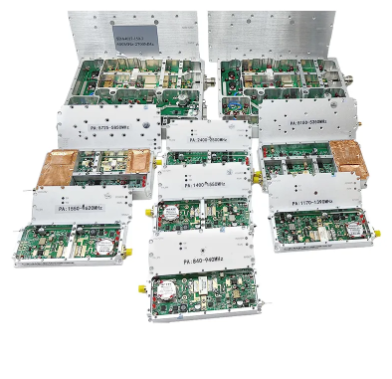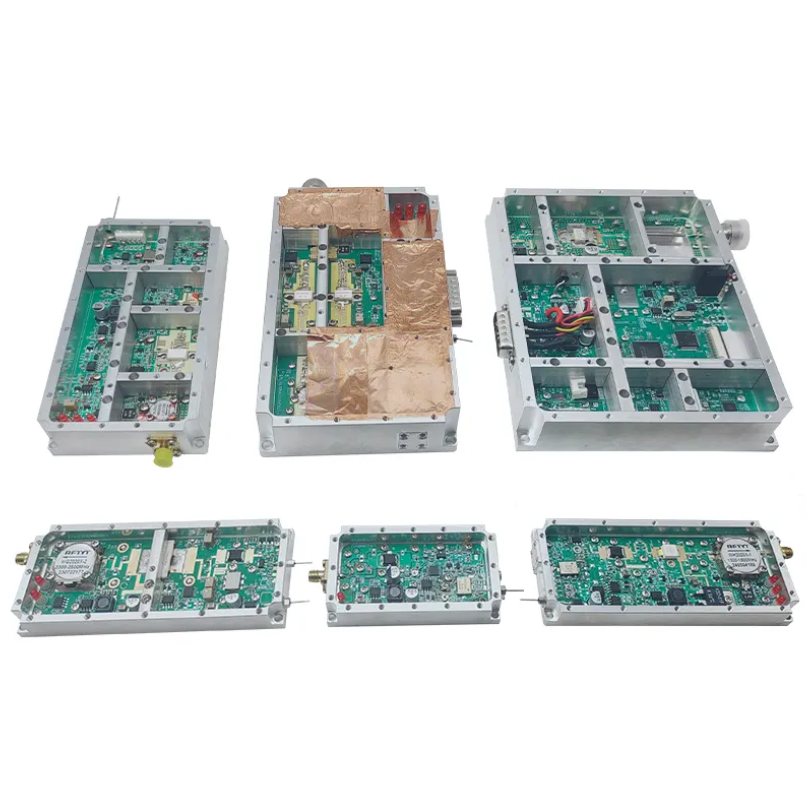Understanding the Critical Impact of Heat Control in RF Power Amplifier Performance
The reliability and performance of RF power amplifiers fundamentally depend on effective thermal management techniques. As these crucial components operate at increasingly higher frequencies and power levels, managing heat dissipation becomes paramount for ensuring optimal functionality and longevity. Modern RF systems, from telecommunications infrastructure to radar applications, require sophisticated thermal solutions to maintain stable operation and prevent performance degradation.
The challenge of thermal management in RF power amplifiers has become more complex as devices continue to shrink in size while demanding higher power densities. Engineers must balance the need for compact designs with effective heat dissipation methods to ensure reliable operation. The consequences of inadequate thermal management can be severe, leading to reduced efficiency, compromised performance, and ultimately, system failure.

Core Principles of RF Power Amplifier Thermal Management
Heat Generation and Distribution Patterns
RF power amplifiers generate significant heat during operation, primarily due to power losses in the active devices and supporting circuitry. Understanding the thermal profile of these components is essential for implementing effective thermal management techniques. Heat generation occurs primarily in the semiconductor junction areas, creating localized hot spots that must be efficiently dissipated to prevent thermal runaway conditions.
The distribution of heat within RF power amplifiers follows complex patterns influenced by component layout, material properties, and operating conditions. Advanced thermal imaging and simulation tools help engineers identify critical thermal paths and optimize component placement for maximum heat dissipation efficiency.
Material Selection and Thermal Conductivity
The choice of materials plays a crucial role in thermal management effectiveness. High thermal conductivity materials such as copper, aluminum, and advanced ceramic compounds are commonly employed to facilitate heat transfer away from sensitive components. Thermal interface materials (TIMs) bridge the gaps between heat-generating elements and cooling structures, ensuring efficient thermal energy transfer.
Recent advances in material science have introduced novel solutions, including diamond-based composites and engineered thermal materials, that offer superior thermal conductivity while maintaining electrical isolation properties. These innovations enable more effective thermal management techniques in high-power RF applications.
Advanced Cooling Solutions and Implementation Strategies
Active Cooling Systems
Active cooling solutions represent the frontline of thermal management techniques in high-power RF amplifiers. Forced-air cooling systems, liquid cooling loops, and thermoelectric coolers provide dynamic heat removal capabilities that can be adjusted based on operating conditions. These systems offer precise temperature control and can handle high heat loads, making them ideal for demanding applications.
The implementation of active cooling requires careful consideration of system complexity, power consumption, and reliability factors. Modern designs often incorporate smart control systems that optimize cooling performance while minimizing energy usage and maintenance requirements.
Passive Thermal Management Approaches
Passive thermal management techniques rely on natural heat transfer mechanisms and carefully designed thermal paths. Heat spreaders, heat sinks, and thermal vias distribute and dissipate heat without requiring additional power input. These solutions offer reliability and simplicity but must be carefully engineered to meet specific thermal requirements.
Advanced passive cooling designs incorporate phase-change materials and optimized fin structures to enhance natural convection and radiation heat transfer. The effectiveness of passive solutions depends heavily on proper thermal interface management and environmental conditions.
Impact of Thermal Management on RF Performance
Temperature-Dependent Parameters
RF power amplifier performance characteristics exhibit strong temperature dependence. Gain, efficiency, and linearity can all deteriorate as operating temperature increases. Effective thermal management techniques help maintain stable operating conditions, ensuring consistent RF performance across varying power levels and environmental conditions.
Temperature variations can also affect the long-term reliability and lifetime of RF components. Proper thermal control helps prevent thermal cycling stress and reduces the risk of premature component failure due to thermal fatigue.
Efficiency and Power Handling Capabilities
The implementation of advanced thermal management techniques directly influences the maximum achievable output power and efficiency of RF amplifiers. Better thermal control allows for operation at higher power levels while maintaining safe junction temperatures. This relationship between thermal management and power handling capability drives continuous innovation in cooling solutions.
Modern thermal management approaches enable RF power amplifiers to achieve higher power densities and improved efficiency through optimized heat dissipation. These improvements translate to enhanced system performance and reduced operating costs.
Future Trends and Emerging Technologies
Integration of Artificial Intelligence
The future of thermal management in RF power amplifiers increasingly involves artificial intelligence and machine learning algorithms. These technologies enable predictive thermal management, optimizing cooling system operation based on historical data and real-time operating conditions. AI-driven systems can anticipate thermal loads and adjust cooling parameters proactively, improving overall system efficiency.
Smart thermal management systems are becoming more sophisticated, incorporating sensor networks and adaptive control algorithms to maintain optimal operating conditions while minimizing energy consumption.
Advanced Materials and Cooling Technologies
Research in advanced materials and novel cooling technologies continues to push the boundaries of thermal management capabilities. Developments in nanomaterials, microfluidic cooling systems, and hybrid thermal management solutions promise to deliver more effective heat dissipation in increasingly compact designs.
The integration of these emerging technologies with traditional thermal management techniques creates new possibilities for handling the thermal challenges of next-generation RF power amplifiers.
Frequently Asked Questions
How do thermal management techniques affect RF power amplifier lifetime?
Effective thermal management techniques significantly extend RF power amplifier lifetime by preventing thermal stress and maintaining stable operating temperatures. Proper thermal control can potentially double or triple the operational lifespan of these devices by reducing thermal cycling and preventing excessive junction temperatures.
What are the key considerations when selecting cooling solutions for RF power amplifiers?
When choosing cooling solutions, engineers must consider factors such as power density requirements, size constraints, environmental conditions, maintenance accessibility, and cost-effectiveness. The selection process should balance thermal performance with practical implementation aspects and system reliability requirements.
How can thermal management be optimized for high-frequency applications?
Optimizing thermal management for high-frequency applications requires careful attention to material selection, component layout, and cooling system design. This includes minimizing thermal resistance paths, implementing advanced cooling technologies, and ensuring proper thermal isolation between critical components.
Table of Contents
- Understanding the Critical Impact of Heat Control in RF Power Amplifier Performance
- Core Principles of RF Power Amplifier Thermal Management
- Advanced Cooling Solutions and Implementation Strategies
- Impact of Thermal Management on RF Performance
- Future Trends and Emerging Technologies
- Frequently Asked Questions

 EN
EN






